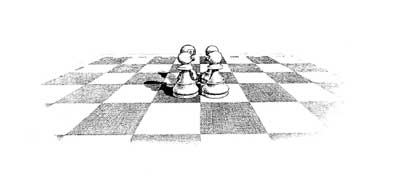|
GROUP THERAPY METHODS
This form of therapy is offered by one or two therapists
for a group of up to 12-14 members of both sexes. It is
well suited to people who wish to explore their social and
interpersonal lives.
Its aim is to bring about substantial change in symptoms,
personal problems or difficulties in interpersonal relationships.
It is a form of supportive treatment. It also encourages
limited adjustments to specific problems, eg. eating disorders,
feminine life and reproductive crises, fathering, mid-life
crises, grief, marital discord, education in well-baby mothering
and fathering, social anxieties, psychosomatic disorders,
physical disorders including asthma, pain problems, ulcerative
colitis and repetitive strain injuries. Certain psychological
processes take place when people meet repeatedly in a small
group to discuss their problems.

Therapeutic benefits include:
- The feeling of belonging to the group
- The opportunity to express strong emotions
- Learning from the successes and mistakes of others
- Discovering that other people have similar problems
- Regaining hope through being valued and helped by others
- Learning from other members' reactions to one's social
behaviour
- Risking new behaviours that promote change
Methods concentrate on present problems in relationships
and how these are reflected in the group. The past is discussed
in order to help understand and make sense of present problems.
The therapist(s) attempt to help each person correct assumptions
about other people's views of him/her. As members get to
know one another better and become used to discussing their
problems, the therapist(s) actively encourages the examination
of current conflicts and relationships.
The group therapy methods offered are:
- DYNAMIC GROUP THERAPY considers each person as the
meeting point of relationships with other group members.
Interpretations are made about these relationships and
how they may have become intensified into conflicts. Interpretations
are also made about reflections of seeing oneself-in-the-other,
and the-other-in-oneself, among the various group members.
Reference is also made to unconscious material that is
inferred from the talk and behaviours of the individual
members.
- ACTION METHODS involve re-enactments by the group, of
scenes from any part of the life of one of its members.
Three major methods are employed:
- VIRGINIA SATIR'S SCULPTING METHODS: Sculpting is
a tool for making an external picture or sculpt of
an internal process such as a feeling, experience,
or perception. It uses body postures and spacing as
a demonstration of relationship patterns of communication,
power, closeness, and distance. The individual representing
his/her interpretation of an event becomes the artist
(sculptor), and asks the other group members to assume
a specific body position and expression that reflect
his/her perception. This allows the individual to
remove himself/herself from the picture to gain a
more objective view, and opens the possibility for
new awareness.
- THE MULTICULTURAL FAMILY CHESSBOARD: This technique
was devised by Dr. Sandra Neil and Dr. Robert Silverberg
to adapt Satir's notion of 'sculpting' as a vehicle
for change, to a clinical setting where physical movement
of the group members is limited, impractical, or undesirable.
This adapted technique allows the individual or group
members to symbolically represent important relationships,
whether personal or within their family, feelings,
and societal structures (eg. school or workplace)
in a complex three-dimensional 'chessboard and pieces'
interaction. The chessboard, chess pieces, and
language are used to make explicit the perceptions
and rules of relationships. Boundaries, roles,
rivalries, friendships, loves, gender issues, and
occupational issues can be projected, identified,
and transformed using this brief solution-oriented
method.
- FAMILY RECONSTRUCTION: Virginia Satir's Transformational
Method. This involves revealing to an individual within
the group the source of their old learnings and puzzles
about living. The individual reconstructs many of
the past mysteries of his/her life, returning to parental
realities and sadness, and looking at his/her beginnings
in the Family of Origin. Re-enactments of three generational
family patterns are constructed. In doing so, an awareness
of the humanity of the individual's parents develops,
allowing healing of old wounds and dispensing with
'all-good or all-bad' perceptions. The Satir method
enables the person to make new choices, gives the
ability and freedom to comment, and endows the person
with self-worth and self-dignity.
|
